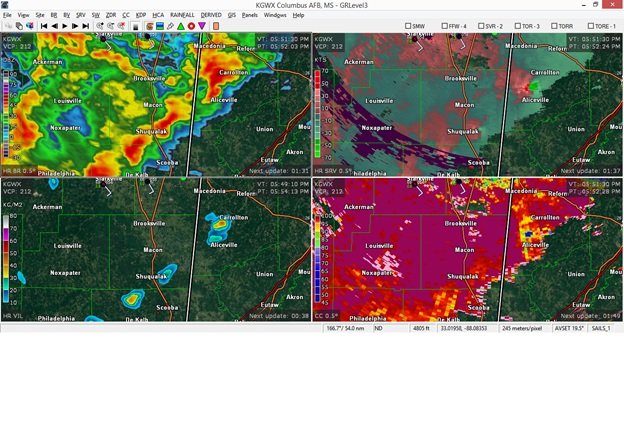Many of us have heard, and may have experienced, tragic stories from destructive weather events. The quickest response I receive when telling a non-atmospheric scientist that I am going storm chasing is, "you're crazy!" Maybe, but I'm still willing to plead my case to my fellow Steemers, and hopefully share some good knowledge!
Where do tornado watches and warnings come from? It's a trick question, because they originate from different weather offices, but they are both created by atmospheric scientists. In the U.S., severe weather watches can only be created by the Storm Prediction Center (SPC) in Norman, OK. They have excellent information on their webpage during severe weather at www.spc.noaa.gov/. All warnings, (i.e. severe t-storm, tornado, winter storm, etc.), are created by local National Weather Service (NWS) offices across the U.S., which you can find yours at https://www.weather.gov/bmx/didyouknow. Local media meteorologist then broadcast SPC and NWS watches and warnings, respectively.
Getting back to the topic, why are storm chasers the safest people to be around in severe weather? That sounds opposite than the truth, right? No. Most of the public believes meteorologist are the only people that can be wrong and still keep a job. And if you are one of those people, no worries, but consider what actually goes in to an atmospheric degree. Some core courses for meteorologists are calculus I-III, differential equations, physics I and II. Then we get into the actual atmospheric science. We don't just survive the core classes, because we actually use that information in weather. If you don't believe me, then google 'weather forecast equations' and look at the images. The point is we know a great deal of storm cell genesis, growth, and dynamics before and during severe weather.
We are also in an era now where storm chasers have cell and internet service in their cars while chasing, so current weather data is available. I usually have one person watching the Radar and another person navigating during chasing. We know where to position ourselves to get the best view and stay out of a harmful situation. Of course, this is not a 100% guarantee that we will stay safe, but we are in the know of the timing and location of the hazard. The trick is to chase it, not catch it!
The true goal of storm chasing for me and almost all meteorologists is to ensure safety for the public during weather hazards. I greatly enjoy speaking with small town sheriffs and fire departments that need direction in keeping their citizens safe during severe weather. The major bonus is that we get to see some amazing weather in action. I want to leave you with a few tips and an image to show you what a tornado could look like on Radar:
Tips and facts:
- Green sky during severe weather usually indicates hail.
- Do not park under overpasses during a tornado (winds can be greater speeds)
- Red on Radar (base reflectivity) indicates heavy precipitation, not necessarily the worst part of a storm (see image)
- A tornado does not have to have a funnel cloud in plain sight. It will have debris seen at the surface.
- A tornado is not a tornado without reaching the ground.
- Straight line winds from a non-tornadic storm can be just as deadly as a tornadic storm, (heed all warnings please).
- Tornadoes can be "rain-wrapped" in which you may not see them through the rain, (happens in high-precipitation storm cells).
- Mobile homes are not safe, (no matter how many tires you throw on top to weigh it down).
There is a massive list I can write, but I'll stop here. Below is a four-panel Radar image from a tornado in Mississippi/Alabama. Can you spot where the tornado might be located? Do you see only one? I will let you know if you guess right! 
I don't know how much experience you have chasing, but lately storm chasers are NOT the safest people to be around during severe weather. Many of them are wreckless, do not obey traffic laws, and I have seen way too many near misses and close calls. Are there a lot of safe drivers, and law abiding chasers? Yes, there are. Absolutely. However, the field is starting to become polluted with more and more amateurs. 2017 proved just that.
Downvoting a post can decrease pending rewards and make it less visible. Common reasons:
Submit